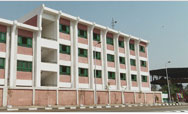Democracy and Governance in Uganda
The Development Challenge: It has been 15 years since Uganda began the long road to economic recovery following two decades of economic chaos and civil unrest. The Ugandan economy achieved an impressive 7.2% annual growth during the 1990s. This was the result of the re-establishment of law and order and macroeconomic stability, the rehabilitation of major infrastructure, market liberalization, including opening up the economy to external trade, the liberalization of input markets, and the liberalization of export markets in coffee, cotton, and tea. The annual gross domestic product (GDP) growth rate dropped from an average of 6.3% in 1998-2003 to 5.8% in 2003-2004. This slowdown has been reflected in poverty indicators. According to the latest figures from the 2002-3 National Household Survey, the population in poverty increased from 34% in 2000 to 38% in 2003, or nine million people today living on less than $1 a day, compared to 7.8 million in 2000. Households that depend on agriculture are among the largest group of impoverished Ugandans. The escalation of armed conflict in northern Uganda has resulted in a sharp increase in the spread of poverty in the North, as well as in the neighboring districts of eastern Uganda. While strong GDP growth caused poverty to decline steadily from 56% in 1992 to 34% in 2000, the benefits of that growth were not equitably distributed across the population, with troubling regional and ethnic disparities. The disturbing rise in inequality over the past six years indicates there are serious underlying structural problems, with the benefits of economic growth going disproportionately to the wealthiest 20% of the population. Uganda's 3.4% population growth rate continues to erode economic gains, deepen poverty, and negatively affect other achievements in the social sectors. Population growth cut deeply into per capita GDP, which was estimated at $250 by the World Bank in its 2004 World Development Report. Although Uganda is considered a success story in terms of HIV/AIDS, with national prevalence rates estimated at 4.1%, it still faces many challenges on this issue, particularly in the north where prevalence rates are estimated to be 11.9%.
Although Uganda was selected as a Millennium Challenge Account Threshold Country, it faces real challenges in addressing low marks for corruption and ruling justly. Uganda is still ranked in the "rampant" range in the Corruption Perception Index with a score of 2.6 (out of 10), which is only slightly better than scores of 2.1 in 2002, and 2.2 in 2003. President Museveni's apparent intended run for a third presidential term in 2006 does not encourage a platform for pluralism, and increased corruption related to election activities is a concern shared by many Ugandans and the international community. Despite continued security threats posed by the Lord's Resistance Army (LRA), recent military successes by the Ugandan People's Defense Force and expressions of willingness by both the GOU and the LRA to talk have prompted USAID and other donors to begin planning for a post-conflict period. U.S. interests in Uganda are twofold. Uganda is a critical player in the region in leading efforts to address regional conflicts peacefully; development and political stability in Uganda is key to East Africa's integration into the global marketplace.
The USAID Program: The overall goal of the USAID program is to assist Uganda to reduce mass poverty. The three strategic objectives address economic growth, improved human capacity, and effective governance. The economic growth objective addresses food security and sustainable agriculture, environmental degradation, trade and investment. It is designed to boost economic growth, restructure and revitalize Ugandan exports, curb environmental degradation, and enhance food security for vulnerable populations, including those affected by HIV/AIDS. This program supports Presidential Initiatives to End Hunger in Africa and Global Climate Change. The second objective, improved human capacity, will reduce vulnerability to poverty by improving the health and education status. The program will help to ensure the delivery of prevention, treatment, care and support services for those living with HIV/AIDS; reduce Uganda's high population growth and fertility rate; and mitigate infant and child mortality due to preventable infectious diseases. Improving the quality of basic education and primary school completion rates are critical objectives of the program. USAID's human capacity program also supports the Africa Education Initiative and focuses on providing education to marginalized communities. The third objective, effective governance, addresses problems of accountability and improved legislative oversight, increased political pluralism, district-level management, and the informed participation of civil society in processes of governance at both the national and local levels. The program also seeks to reduce the impact of conflict in selected areas of Uganda by promoting reconciliation and reintegration, peace dialogues, and support for vulnerable children and victims of torture.
(Excerpted from the 2006 Congressional Budget Justification for Uganda)
Back to Top ^
|


